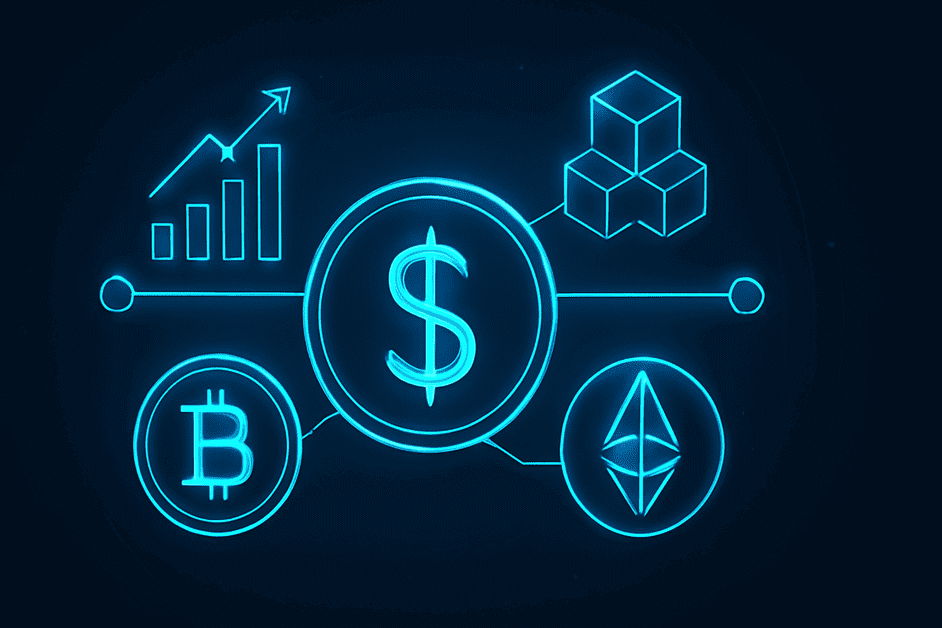
Interest Rates: The Connection Between Crypto and Blockchain
Interest rate is the percentage that a borrower must pay to a lender over a specific period, typically calculated annually. For example, if you borrow 100 million VND from a bank at an interest rate of 6% per year, after 12 months, you will repay 100 million VND in principal plus 6 million VND in interest.
1. Interest Rate and Its Relationship with Crypto
While interest rates in traditional finance determine the cost of borrowing and the returns on savings, the impact of interest rates in the crypto world is evolving. The concept of interest rates in crypto is shifting towards decentralized finance (DeFi), where users can lend and borrow digital assets such as Bitcoin and Ethereum to earn interest.
2. Types of Interest Rates in Crypto
2.1. Fixed vs. Variable Interest Rates in Crypto
-
- Fixed Interest Rates: In traditional finance, fixed interest rates are often applied to loans with a specific term, providing stability for the borrower. Similarly, some DeFi platforms offer fixed interest rates for lending cryptocurrencies.
-
- Variable Interest Rates: The crypto market may have fluctuating interest rates, influenced by supply and demand for tokens or liquidity in decentralized protocols.
2.2. Compound Interest in Crypto
Compound interest in the crypto world is particularly powerful, especially on decentralized lending platforms. Users not only earn interest on their principal but also on accumulated interest, causing the interest to grow exponentially over time.
3. Factors Affecting Crypto Interest Rates
3.1. Supply and Demand for Cryptocurrencies
-
- Just as in traditional finance, supply and demand directly influence interest rates in crypto. When demand for a specific cryptocurrency increases, the interest rate for lending that coin may rise.
3.2. Inflation in the Crypto Ecosystem
-
- Inflation affects traditional currencies, and it can also impact cryptocurrencies. For instance, when the market becomes inflated due to excessive coin issuance, interest rates may adjust to reflect this change.
3.3. Economic Policies and Regulations
-
- Governments and global regulatory bodies are increasingly paying attention to how cryptocurrencies and decentralized finance (DeFi) affect the broader economy. Regulatory policies can influence the attractiveness of crypto investments and interest rates in DeFi platforms.
3.4. Economic Growth in Crypto
-
- Strong growth in the crypto economy can lead to high demand for capital, pushing interest rates higher. Conversely, during a crypto market downturn, demand for borrowing decreases, resulting in lower interest rates.
4. The Role of Interest Rates in the Crypto Economy
Interest rates play a crucial role in shaping the dynamics of the crypto economy. For example:
-
- Savings and Investment: High interest rates on crypto loans can encourage users to deposit their digital assets on lending platforms to earn passive income, thus promoting savings. Conversely, low interest rates might push users to seek other investment strategies such as staking or yield farming.
-
- Monetary Policy in DeFi: Just as central banks adjust interest rates to control inflation and stimulate the economy, DeFi protocols can also adjust interest rates to stabilize liquidity and attract more users to their platforms.
-
- Financial Development and Stability: Both traditional and crypto economies need balanced interest rates to maintain financial stability. In crypto, decentralized lending and borrowing platforms are emerging as key players, offering new ways to manage capital and earn interest.
5. Conclusion
The concept of interest rates has expanded beyond traditional finance into the crypto space, where it drives the development of decentralized lending and borrowing platforms. Understanding how interest works in crypto and the factors influencing it will provide users with deeper insights into the role of digital assets in the global financial system.